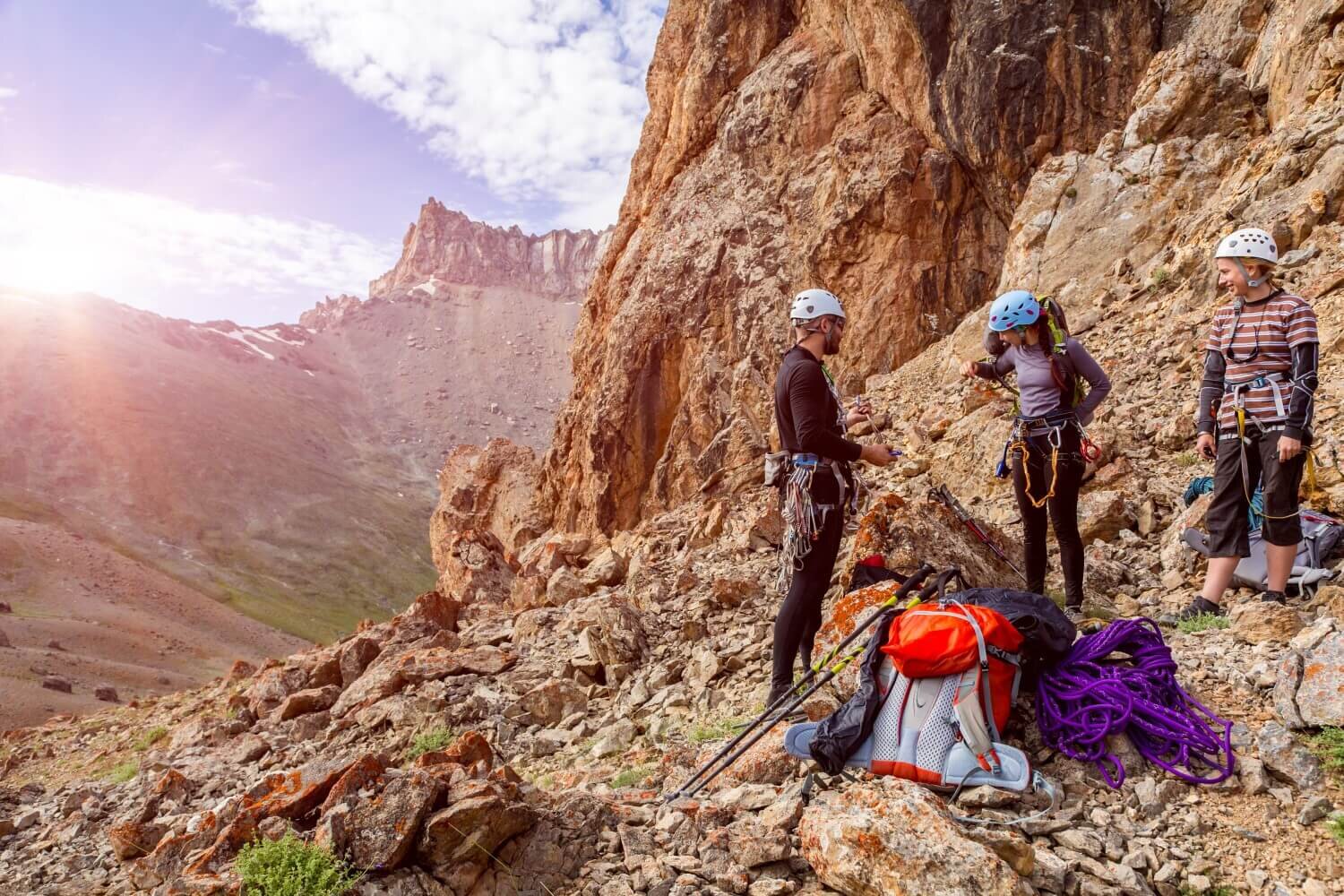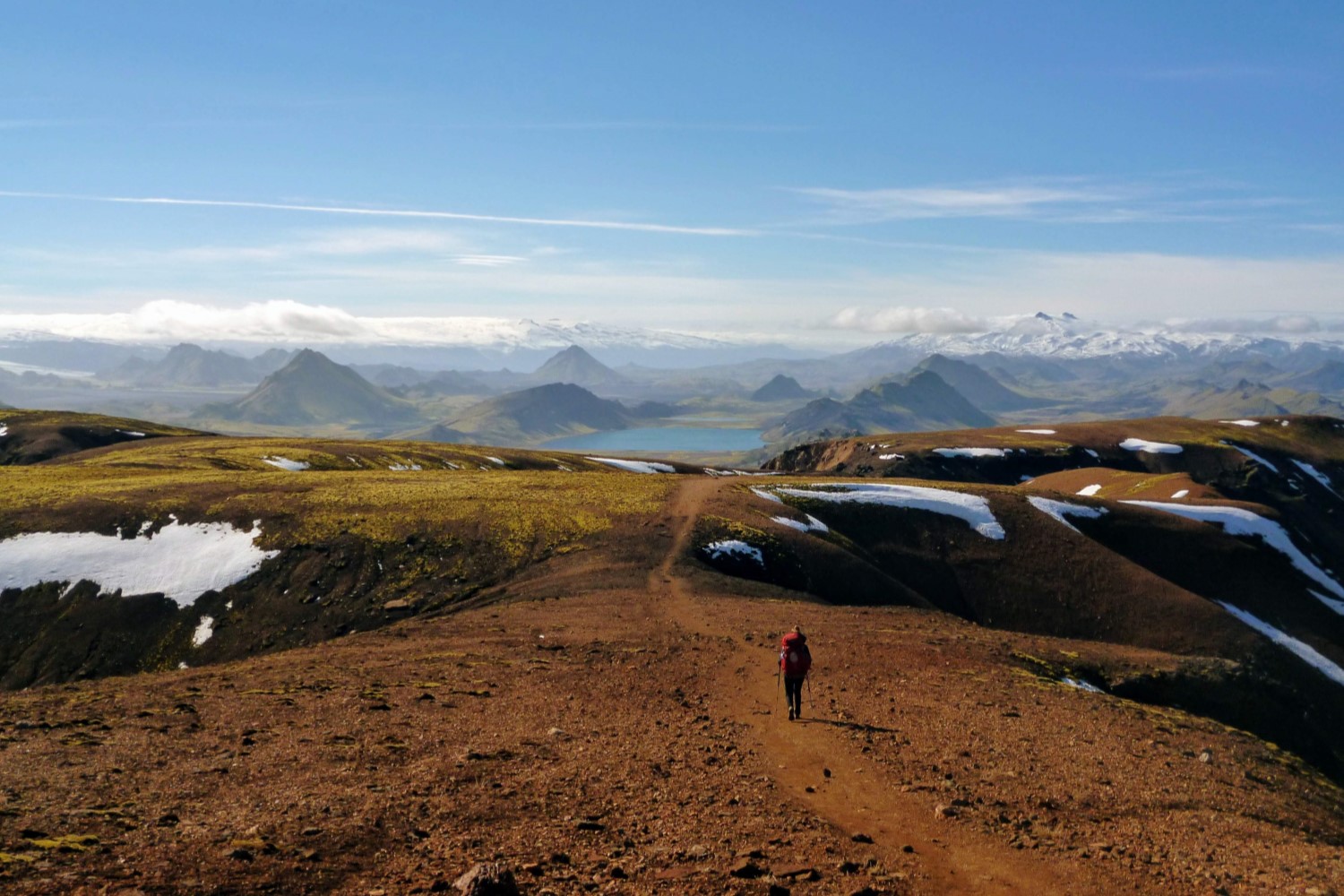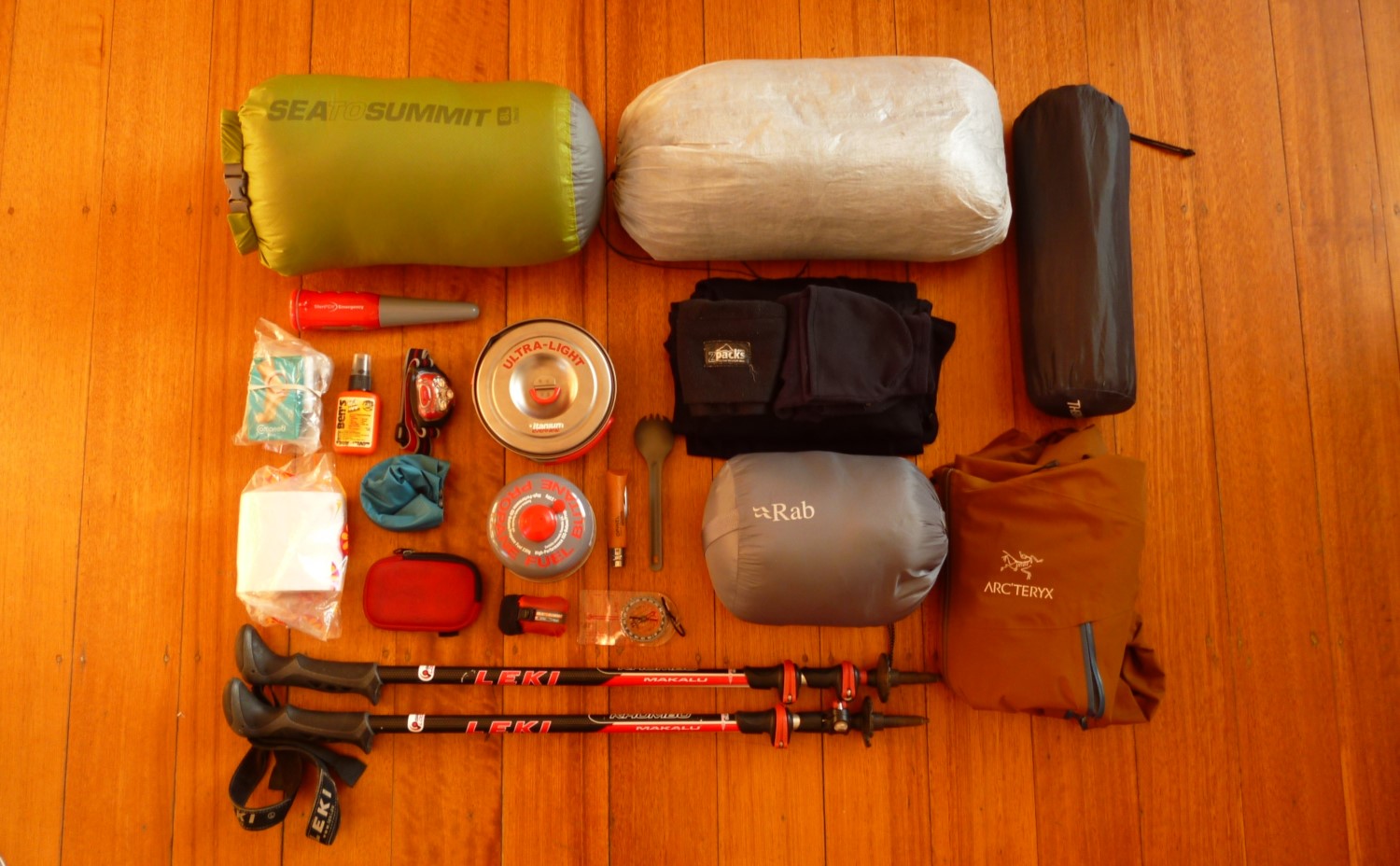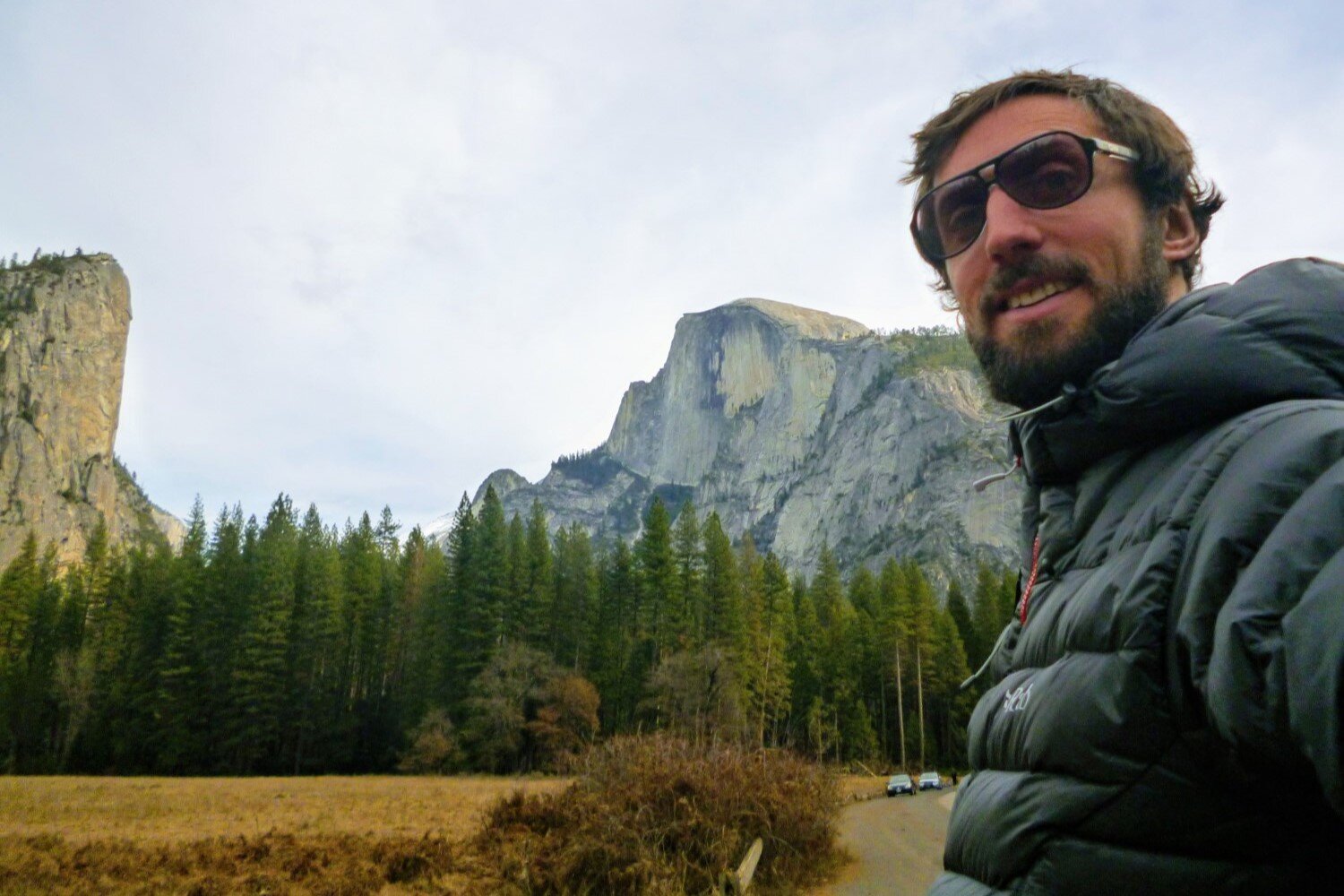Best Crag Packs of 2024
JUMP TO: BLACK DIAMOND CREEK 50 / PATAGONIA CRAGSMITH 45 / MAMMUT NEON GEAR 45 / ORGANIC CLIMBING DUAL ZIP ROLL DOWN PACK / TRANGO CRAG PACK 2.0 / METOLIUS CRAG STATION / BLACK DIAMOND GYM 35 / BUYING ADVICE
Author: Lana Stefanovic
The Short Version
Best Overall: Black Diamond Creek 50
Best for Comfort: Patagonia Cragsmith 45
Best for Organization: Mammut Neon Gear 45
Best for Bouldering: Organic Climbing Dual Zip Roll Down Pack
Best Value: Trango Crag Pack 2.0
Best Duffel Style Pack: Metolius Crag Station
Best Gym Climbing Bag: Black Diamond Gym 35
The Long Version
Lugging a load of heavy equipment to the crag is a curse that almost every climber will be familiar with. So whether it takes 5 minutes or 2 hours to get to your favorite climbing spot, having a comfortable backpack to transport all that gear to the crag can make your life a fair bit easier.
For those that aren't familiar with them, crag packs are, simply put, a backpack used to transport all your climbing gear to and from the rock face. They generally fall into the 35 to 50 liter volume range and are built to be comfortable, durable, and well organized.
Unlike alpine or follower packs, which tend to be stripped down to the bare essentials, crag packs usually have better suspension systems and additional features such as extra pockets, gear loops, and rope tarps. They are, therefore, often heavier than alpine or follower packs. But during those long, arduous approaches it is often worth sacrificing a few ounces for the extra comfort and durability.
The style of a crag pack can vary, with some being duffel-like bags and others being haul-like backpacks. Of course the range of styles can also add to the confusion about what’s best to buy!
In this review we look at the best crag packs across a range of styles. We primarily focus on comfort, durability, and features that help with organization.
Whether you are looking for a workhorse that can withstand the sharp branches on your approach, or a well-organized backpack that offers easy access to all your gear at once, we’ve got it covered in our list of crag packs below.
If you love reading this review of the best crag packs, then you'll likely love reading some of our other climbing content:
Need To Know What To Look Out For?
The requirements for a crag pack are different to those for other climbing packs. If you are unsure about what to look for, be sure to check out our buying advice at the bottom of the article.
Best Overall: BLACK DIAMOND CREEK 50
VOLUME: 50 L
WEIGHT: 4 lbs. 7 oz.
MATERIAL: 1200-denier Polyester
PRICE: $$$
PROS: Extremely durable, offers easy packing
CONS: A bit pricey
The mighty king of crag packs – the Black Diamond Creek 50 can swallow up all your equipment on route development days, giving it the title of a true gear dumpster!
If you are looking for a pack that’s gonna survive day-to-day abuse, then it’s quite hard to beat the Creek 50. It is waterproof, extremely durable, and with a haul bag-style bottom that keeps the pack upright at all times – for easy loading and unloading.
And although the Creek 50 might seem like a black hole, its full-length side zipper allows you to easily retrieve gear trapped at the bottom of the pack. However, the Creek 50 is essentially a top-loader backpack, so accessing your gear is not as fast or easy as it is with a true duffel-style pack.
The pack comes with a thermoformed back panel, padded shoulder straps, and a cozy hip belt, so comfort is something you will not have to worry about.
For sport climbersthe 50 L capacity might be a bit excessive, but I’m sure that trad climbers won’t complain. For those who don't need such large capacity, Black Diamond also make a 20 L and 35 L version of the Creek.
All in all, whatever your climbing goals are, you will not regret having a tough and comfy Black Diamond Creek as your companion!
Best for Comfort: PATAGONIA CRAGSMITH 45
VOLUME: 45 L
WEIGHT: 3 lbs. 12 oz.
MATERIAL: 630-denier Nylon
PRICE: $$$
PROS: Durable, comfortable, and well-organized
CONS: Zipper might be hard to close when the pack is fully loaded
Although Patagonia calls the Cragsmith a gear dumpster, we would rather say this pack is a great choice when looking for comfort and accessibility.
Due to its dual opening system, getting your gear in or out has never been easier. You can access your gear via the middle zip that turns the Cragsmith into a top-loader pack, or through the large zip on the back panel. Thanks to added foam stiffening in the base and side of the body, the Patagonia Cragsmith 45 holds its shape and therefore works great as a freestanding pack as well.
A massive lid compartment with an internal stash pocket, as well as a stretch pocket on each side, make the Cragsmith an organizational wizard. However the capacity in the main body is not as large as, say, the Black Diamond Creek. Plus, the upper zipper can be a bit hard to close when the pack is fully stuffed.
Patagonia have used partially recycled nylon and polyester, along with a fluorinated DWR finish, in attempt to reduce the environmental footprint of the backpack. Plus, the 630-denier nylon used on the body of the pack should provide plenty of abrasion and puncture resistance for those who don't wish to be gentle with their gear.
When walking long distances, your body shouldn't suffer either – the highly breathable mesh shoulder straps and back panel, along with load lifter straps and a padded hip belt, make the Cragsmith 45 one of the most comfortable backpacks on our list.
Overall, the Patagonia Cragsmith is an outstanding crag pack – durable, comfortable, and well-organized. If you don’t plan on carrying nuts, cams, bulky hexes, and 80-meter half ropes, then the Cragsmith may be your ultimate cragging buddy!
Best for Organization: MAMMUT NEON GEAR 45
VOLUME: 45 L
WEIGHT: 3 lbs. 1.4 oz.
MATERIAL: 420-denier Triple-ripstop coated Nylon
PRICE: $$$
PROS: Great organization, ethically made
CONS: Not the best choice for trad climbers, not as durable as other packs on the list
This is a pack with some crazy cragging features. If you are looking for organization, then nothing can beat the Mammut Neon Gear 45.
You get a number of internal pockets, an external pocket, gear loops both inside and out, a rope fixing strap, and – to top it off – a dual access system.
The access system allows you to reach your gear via a top zipper or through the large zippered access on the back panel, with the latter helping to light up the entire main compartment at once. There is also a removable rope trap, to help ensure your rope stays clean and protected.
One downside is limited capacity for trad climbers. Next to your rope, quickdraws, and personal gear such as shoes and harness, there is not much space left for a bulky trad rack. However, if you choose to attach your rope to the outside of the pack, then the Neon Gear 45 might be ideal for your trad climbing adventures as well.
The Neon Gear 45 is manufactured under the oversight of the Fair Wear Foundation for factory working conditions, so I’m sure nature lovers will appreciate it being sustainable and ethically made. Plus, it offers good back ventilation thanks to the 3D EVA foam with air channels, and remains comfortable even after hours of walking.
Thanks to its accessibility, comfort, and organization, the Mammut Neon Gear is definitely a pack that will serve you well and keep going the distance.
Best for Bouldering: ORGANIC CLIMBING DUAL ZIP ROLL DOWN PACK
VOLUME: 32 L
WEIGHT: 1 lbs. 3.2 oz.
MATERIAL: 1000-denier Cordura
PRICE: $$
PROS: Chic custom design, and durable fabrics
CONS: Reduced back support
With the Dual Zip Roll Down Pack, Organic Climbing is bringing you a handmade one-of-a-kind climbing backpack! Next to producing stylish crash pads and chalk bags, this small US-based company is now also producing a crag pack to finally complete the boulder trio.
The artistic and durable Dual Zip Roll Down is a dream pack for bouldering junkies. Thanks to the roll-top closure you can easily change the carrying capacity – expand it when packing up for cold and snowy boulder sessions, or roll it down to its minimum capacity during hot summer days.
The dual zip panel on the front of the pack is a winner too. It gives you quick and easy access to all your equipment at once, without having to roll out the top. There will be no more digging in hopes of finding the helpless little brush trapped at the bottom of your pack.
You have two side compression straps that can be used for hooking the pack onto a crash pad, and die-cut ergonomic shoulder straps that provide a reasonable amount of comfort. Still, we’d love to see some improvements in terms of padding and support.
At the end of your boulder session, you can clip your climbing shoes onto the external daisy chain instead of shoving them into the inside compartment. In that way, you will stop the smelly bacteria from invading your rubbery empire.
Whilst making some sacrifices in comfort, the one-of-a-kind Dual Zip Roll Down Pack has everything else – durability, accessibility, organization, and style! While fighting your way through the V10 crux you’ll be happy to see the joyful colors of the custom Organic Climbing pack cheering you up!
Best Value: TRANGO CRAG PACK 2.0
VOLUME: 45 L
WEIGHT: 3 lbs. 2 oz.
MATERIAL: 1000-denier Titan wrap material
PRICE: $$
PROS: Convenient and affordable
CONS: It might be uncomfortable for some climbers
Made with cragging in mind, the Trango Crag 2.0 is all about convenience and simplicity. Sport climbers and multi-pitch junkies will find this pack to be a perfect fit for their in-a-day climbing missions.
The tapered, upright shape makes for stress-free packing, but to reach an item at the bottom of your pack, you’re probably gonna have to unload most of your gear. But that’s where the removable mini tarp comes to the rescue! It will keep your equipment clean and out of the dirt.
The external mesh shoe pouch allows your climbing shoes to breathe and air dry. Remember – wet shoes equals stinky shoes! Plus, you won’t have to clip them to the outside, or even worse – stash them inside your pack anymore.
The ezippered access is perhaps not the best choice for a top-loader pack like this one. A drawstring and a buckle, like on the Black Diamond Creek, gives more flexibility with respect to capacity, and allowing you to compress and equally distribute the load. The long-term durability of the zipper is also a bit questionable. But if you treat it with extra care, it shouldn't cause you any problems.
Although the Trango Crag 2.0 does have a durable 1000-denier fabric, it is not the best-built backpack on our list, and the fitting can sometimes be a bit awkward. However, if you are looking for a reasonably priced pack your sport climbing sessions, the Crag 2.0 could prove to be just the beast!
Best Duffel Style Pack: METOLIUS CRAG STATION
VOLUME: 41 L
WEIGHT: 2 lbs. 10 oz.
MATERIAL: Durathane, ballistic Nylon
PRICE: $$
PROS: Durable, practical
CONS: Not as comfortable as other packs, capacity might be too small for some climbers
If you are looking for simple and durable, then the Metolius Crag Station is your last stop! It is a true duffel-style pack that will save you the hassle of endlessly digging through your pack to find your gear – a struggle familiar to all of us, I’m sure!
Looking for something? Simply lay it flat on the ground and zip it wide open.
The sides are reinforced with ‘Duathane’ haul bag material, meaning you don’t have to worry about it getting torn by the sharp granite or nasty thorns. Two external side pockets are great for stashing your small personal items, whilst tuck-away shoulder straps and hip belt make the pack convenient for traveling. Plus, the dual compression straps work wonders at reducing the pressure on the main zipper when the pack is fully loaded.
But, your back will be left at the mercy of sharp equipment – the Metolius does not provide a great barrier between your back and your gear. So if there is often a long approach ahead of you, then you might consider getting a comfier backpack.
The 41 L capacity might be too small for trad climbers. But if you're packing a 70-meter rope, quickdraws, harness, shoes, and a couple of extra layers for a day at the sport crag, then the Metolius Crag Station will do the job perfectly.
Considering it is only available in one size, we strongly recommend trying the pack out before purchasing!
Best Gym Climbing Bag: BLACK DIAMOND GYM 35
VOLUME: 35 L
WEIGHT: 1 lbs. 11 oz.
MATERIAL: 1200-denier Polyester
PRICE: $
PROS: Easy to pack, durable
CONS: A bit pricey for a gym climbing bag
You might think that the requirements for a gym bag are not that complex, and you are definitely right. Still, I’m sure you’ll appreciate having one that’s durable, spacious, and easy to use.
Fortunately, the Black Diamond Gym 35 is the perfect bag for indoor climbing outings. It can swallow your rope, harness, multiple pairs of climbing shoes, and chalk bag – and still leave space for a couple of chocolate delights as well.
The drawstring and hook closure speeds up the packing process. And for those who like to keep things organized, there is an inner flap and small outer zip pocket.
Thanks to the padded shoulder strap the Gym 35 is also quite comfortable to carry.
And with the practical top loading design you can simply toss the bag down, put on your climbing shoes, and start projecting!
BUYING ADVICE FOR CRAG PACKS
Crag packs put their focus on durability, comfort, and organization. Their role is to carry all your gear to and from the cliff, but they are not meant to be worn during the climb itself.
If you are in search of a trusty companion to help you conquer the big wall, or ascend harsh alpine routes, then check out our review of the best climbing backpacks.
Capacity
How much gear you plan on carrying to the crag, determines the size of the backpack you will need. Crag packs are usually in the 35 to50 liter range. A 35-40 liter crag pack will be more than enough for a day trip to the sport crag. On the other hand, if you plan on racking up a set of big cams for protecting off-widths, you will probably need a bigger backpack – something closer to the 50 liter mark.
Style and access
Most crag packs resemble either a duffel bag, a haul bag, or have zippered access via the back panel and/or top lid.
DUFFEL STYLE PACKS: Duffel style crag packs combine the carrying comfort of a backpack and the accessibility of a duffel bag. They lay flat on the ground and zip wide open to allow fast and easy access to all your gear at once. Due to their design, they usually have poor padding on the back, which doesn’t make them ideal for long approaches. Trad climbers would probably want to look elsewhere, but sport climbing junkies will find the duffle-style backpack easy and efficient to use.
HAUL BAG STYLE PACKS: Haul style crag packs are the best choice when needing to quickly stuff your gear into your pack. The drawstring closure allows for a wide opening, and the capacity can be used to its fullest. They are designed with an emphasis on both comfort and durability, so whatever your climbing preferences are, you can’t go wrong by choosing a haul-bag-style pack.
BACK PANEL ACCESS PACKS: Some crag packs offer zippered access via the back panel. Most packs that have zippered back panel access will also have top loading access too. Zippered access via the back panel will make loading and unloading your gear easier and faster than with any other backpack. Plus, opening via the back panel helps avoid getting dirt and grit in the back panel and shoulder straps – making this design somewhat preferable to duffel style access. However, it can sometimes be hard to seal up the back panel zipper when the pack is fully loaded.
OTHER STYLES: Occasionally other styles are used too. For instance, the relatively unique Organic Climbing Dual Zip Roll Down Pack blends elements from a duffel bag and a dry sack to provide wide open access when laid out on the ground. Whilst others provide more restricted access, such as the Trango Crag 2.0 which only has zippered access via the top lid.
Fabrics and durability
You need your backpack to be strong! Sharp rocks and branches will constantly test the exterior of your pack, plus the bulky gear stuffed inside the pack won't be so gentle on it either. Luckily for us, crag packs are generally made of tough and durable materials.
NYLON: Nylon has proven to be the best for tough terrain, due to its high levels of abrasion resistance. However, the ability of nylon to weather abuse can vary depending on the exact specifications of the fabric. Fortunately, we can use denier measurements to get an indication of the durability of nylon.
DENIER MEASUREMENTS: Technically, denier is a measurement of the thickness of the strands or fibers used in constructing the fabric. As the denier rating goes up so does the thickness of the fibers and, therefore, generally also the durability of the fabric.
Therefore, you can be sure that a backpack with 840-denier nylon would be great for hauling up the wall, but on the other hand, a 140-denier nylon pack is going to be less suitable since it would deterioate much faster.
OTHER FACTORS: Of course, denier isn't the only thing that determines the durability of a backpack. Other factors such as the quality of the seam stitching, the type of weave used, or the tightness of the weave in the fibers can all affect the durability of your pack. But nonetheless, looking at the denier of the fabrics will give you a decent indication of the durability of a pack.
If durability however is a major concern, also look for reinforcement in high wear areas – some crag packs have reinforcement on the parts most subject to abuse, e.g. the bottom or or lower sides, to ensure they don’t get worn out.
Comfort
Considering you're often going to be carrying heavy, bulky, and sharp climbing equipment to the crag, you will need a well-balanced comfortable backpack to help ease the burden.
PADDING: Most crag packs should have a decent amount of padding on the back panel and shoulder straps. Plus, depending on the length of your approach, you may also want to consider a crag pack with a well cushioned hip belt.
LOAD ADJUSTMENT: If you are going to be carrying heavier loads or walking for long periods, then look for features that help fine tune weight distribution. Load lifter straps can help bring heavier loads in closer to your body. Compression straps can help secure your pack contents and prevent them from moving around when your pack isn't full.
Truth to be told, if you are walking five minutes to get to the crag, then comfort is not likely to be much of a concern. However, for long or steep approaches, carrying comfort will be an important consideration.
Organization
Organizing your gear can often be a difficult task. But that’s where crag packs come to the rescue!
POCKETS: It generally helps to have internal and/or external pockets in addition to the main compartment. Mesh exterior pockets can be useful for storing (and airing) climbing shoes on the return hike. Internal stash pockets can help with organising small items. If your crag pack has a hip belt, then hip belt pockets can be useful for convenient access to snacks etc on the approach. Some crag packs also have internal or external sleeves for water bottles.
GEAR LOOPS: External gear loops can be useful, but it is internal gear loops that really assist with organizing your gear. Internal loops can be used for keeping quickdraws and other climbing gear easily accessible and mess-free. Externally, a daisy chain can be useful as a last resort for tying on gear when you are beyond capacity.
ROPE STRAPS: If your crag pack has a smaller capacity, then external straps for tying on rope might be an important consideration.
COMPRESSION STRAPS: Compression straps are useful for compressing gear during the approach, if the pack isn't full. If you aren't able to compress your pack, then if it is half full the movement of equipment inside the pack could get irritating (depending on the design).
TARPS: Some packs – like the Trango Crag 2.0 – have a built in mini-tarp to give you a convenient place to put gear when searching through your pack. These built in tarps generally aren't large enough to be used as a full rope tarp, but can be a useful addition nonetheless.
PACKING TIP! Although most crag packs offer a few external attachment loops, we recommend packing all your gear in the inside compartment (with the exception of stinky climbing shoes of course). You would not believe how easily equipment gets hooked on even the tiniest twigs when dangling on the outside of the pack.
MORE INFORMATION
If you loved this gear review article, then you'll likely love reading our other climbing content:
Or check out our Gear Reviews Overview Page for more gear-fiend worthy articles.






















